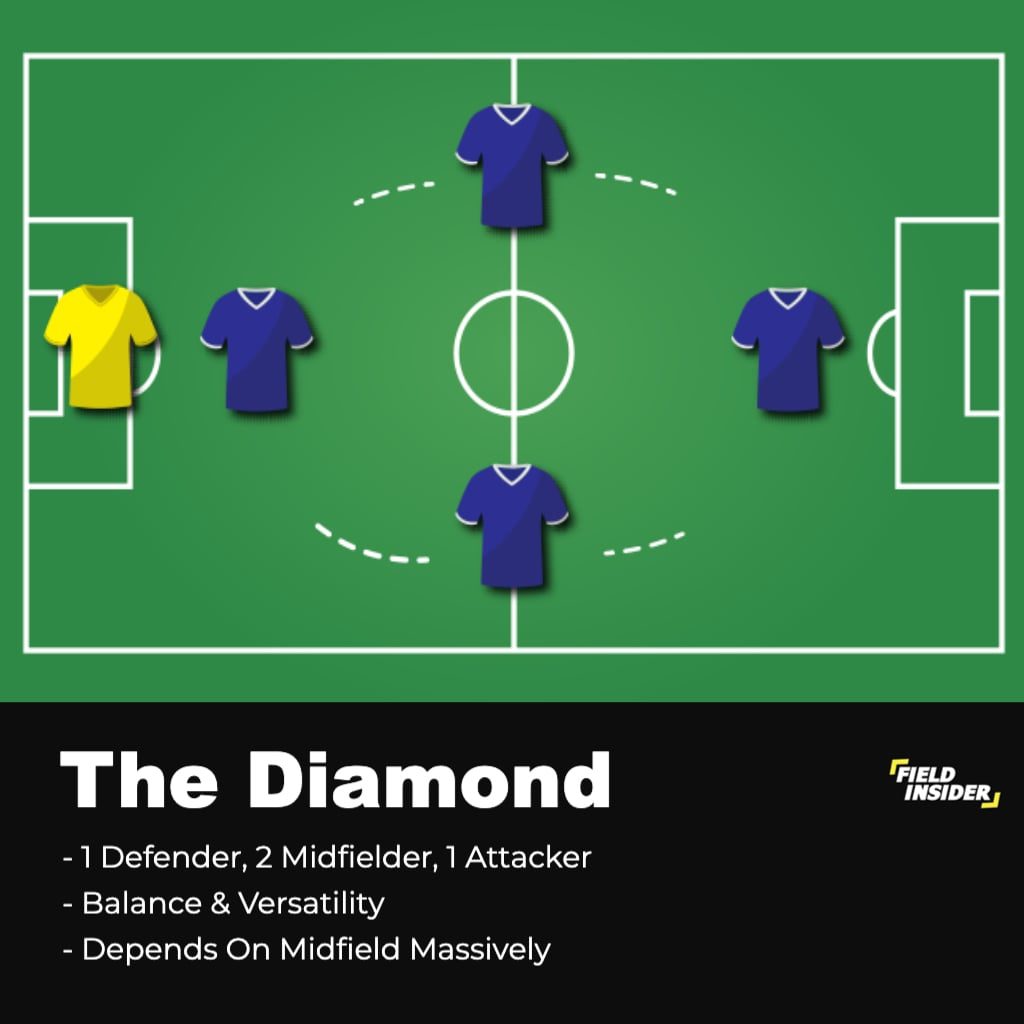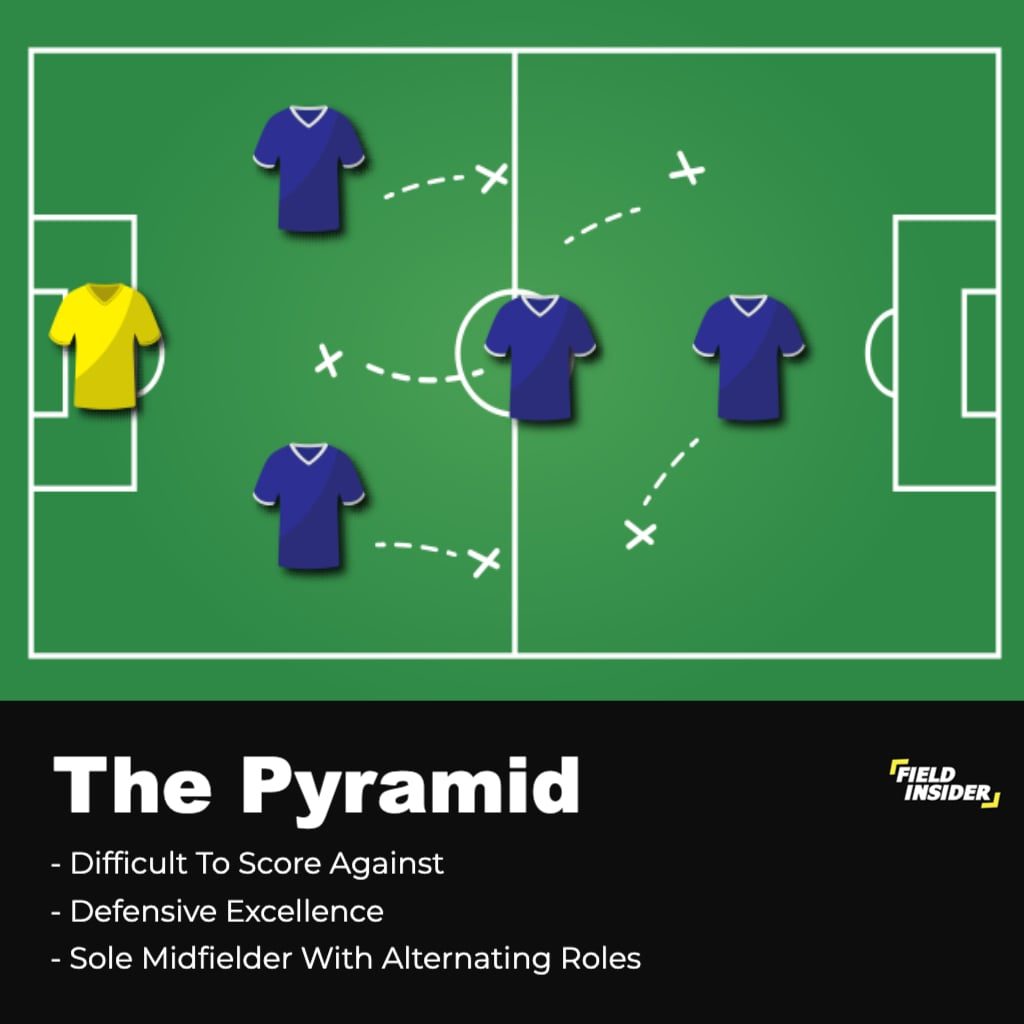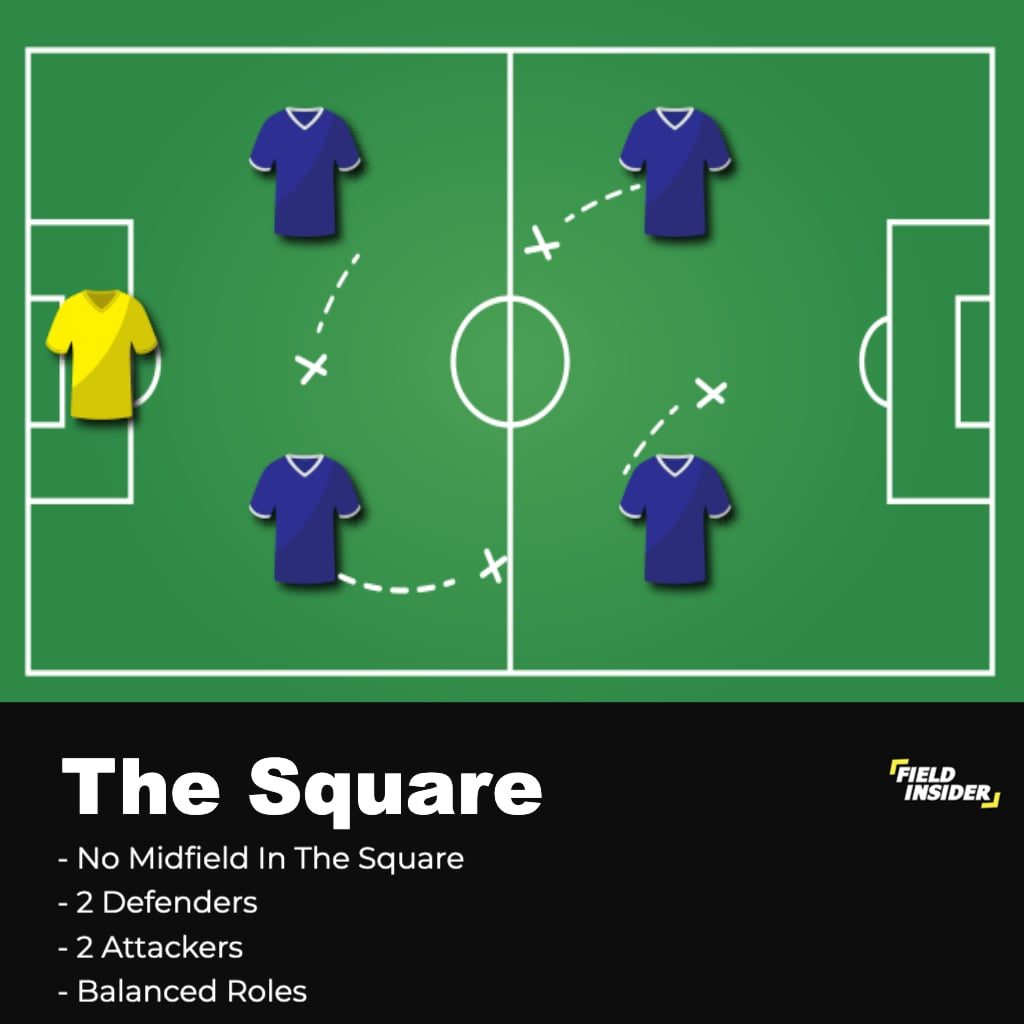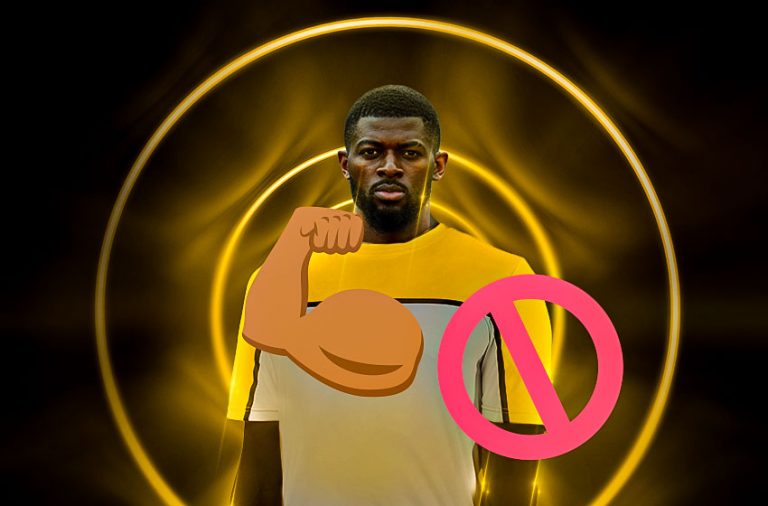What Are The Best 5-A-Side Formations?
Football is a very tactical sport. Managers change their tactics and formations every now and then in order to achieve their desired results. We normally see this is in 11-a-side football where formations or tactics are changed repeatedly. However, 5-a-side football is also no exception.
A good formation backed up with the right tactical planning is the key to winning 5-a-side games as well. Therefore, we are going to discuss the 4 best 5-a-side formations. A formation can either be very attacking or very defensive. Let’s take a look at a few examples.
4 formations for today!
The 4 formation types under consideration today are “Diamond”, “Pyramid”, “Square” and “Y”. The names are as versatile as the formations are. Yes, these are all 5-a-side formations and none of it is going to apply in 11-a-side football.
The reason behind it is that 11-a-side games comprise more players. Therefore, any tactical planning considering only 5 players is not going to be very effective in any other format of football. Formations are decided before the game. However, they can also be changed at halftime or even during the games depending upon the coach’s planning.
the most balanced formation; the diamond:

Diamond is the first 5-a-side formation we are going to talk about. Diamond is also known as 1-2-1 which means 1 defender, 2 midfielders and 1 forward. This tactic is very common when a team wants to score as many goals or wants to equalize. However, this is also the most common of 5-a-side formations.
balance:
The reason behind it is that it allows you to both attack and defend according to the needs of the team. This formation provides a balance between the defence and the attack. Both midfielders play the most pivotal role in this formation.
The midfield will usually support the attack as well as the defence. Meanwhile, the striker and the last man usually stick to their positions. If the defender leaves his position, it can lead to the team conceding a goal.
Similarly, if a striker drops down again and again without any need, it can cause the midfield to be overcrowded. Furthermore, the midfielders are going to have no one up front to feed the ball and this is going to lead to no goal-scoring chances. Therefore, positional awareness and playing according to your positional demands is the key to this formation.
it all comes down to midfield:
Normally, the fittest players play in the midfield. This applies to this formation as well. However, this formation also requires the most tactical-minded and the best game readers to play in the midfield.
Midfield play is never easy. Most genius players on the team usually play in midfield and the same applies here. One downside of this 5-a-side formation is that the team can easily concede a goal if the opponents initiate a counterattack. A single defender can find it very hard to stop 2 or even 3 players rushing at him. Therefore, the risk factor is still present in this formation.
the most defensive formation; the pyramid

The Pyramid is the next on our 5-a-side formations list. This formation is also known as 2-1-1 which means 2 defenders, 1 midfielder and 1 striker. This is clearly, a very defensive formation and is used at times when the team wants to defend their lead.
difficult to score against!
However, some coaches like to start with this formation and wait for the opponents to get tired trying first. The tactics and planning can differ according to the mentality of the coaches. However, one thing about this 5-a-side formation is true it promises to stop goals.
This formation uses a solo midfielder as well as a striker. The midfielder is obviously, expected to link the play from defence to the striker. However, the role of the midfielder still remains pivotal over here as well as any other 5-a-side formations we are going to discuss.
Midfielders are expected to support the striker because the other team might be playing defensive as well. They are also expected to drop down and add more strength to the defence in order to completely outnumber the opposition attackers. The positives of this formation are many.
never exposed from behind
The opposition team usually tries to push more of their players forward in order to break the defence. This allows more space for the striker upfront and can lead to scoring goals. Even if one of the two defenders goes forward, one still remains at the back as the last man. This also does not make the defence vulnerable.
Therefore, one out of the two defenders can support his fellow midfielder and can help the team to maintain possession. A downside of this formation can be that it might not always be very helpful in attacking or scoring goals.
the most attacking formation; the y:

Y is the third 5-a-side formation on this list. We also know it as 1-1-2 which means 1 defender, 1 midfielder and 2 strikers. It is pretty evident that this is an all-out attacking formation and is very risky as well. Having only 1 defender at the back is always vulnerable no matter how good he is.
Furthermore, the midfielder is always busy helping out the defender because the striker already has another player as his support. Therefore, keeping possession is very hard in this 5-a-side formation as well.
This is also a very uncommon formation because it can easily leave your defence exposed. It can also leave your midfielder helpless, running around trying to chase the ball. If the striker drops down repeatedly, then there is no point of starting with 2 strikers in the first place.
the risk factor:
This is indeed, a very risky formation can any good team can score a lot of goals against this formation. This formation is best if the team desperately needs a goal and can be knocked out if it doesn’t score. Other than that, the downsides of this formation are many.
To play this formation, the players need to be very familiar with it. Thus, the coach and the players need to put in a lot of extra effort on the training ground in order to learn and master this formation.
The attackers have to drop down at some point too. This can leave the entire team exposed and can lead to no outcome. The entire rhythm of the team could be broken if the opposing team smartly man marks the players. The only good aspect of this 5-a-side formation is that it can lead to one or potentially many goals.
a different one; the square:
Square is the fourth 5-a-side formation on this list. We also know it as 2-0-2 or 2 up, 2 back. The players play in a pair of 2. One pair plays as the attacker and one pair plays as defender. Hence, why we call it Square.
no midfielders:
There are no midfielders in this formation. However, the players do have to move in the midfield in order to keep possession or snatch the ball. Normally, both pairs prefer playing on their positions helping each other at all times. However, this is not always possible.
There are a few times when players have to leave their positions such as the midfield example given earlier. The main objective of this 5-a-side formation still remains clear that the players either attack or either defends.
balance:
This is very direct approach and indeed, gives a balance between both attack and defence. However, keeping possession can still be tough and if you are playing this formation, you cannot expect to keep the ball to yourselves at all times. It is true that both defenders and attackers have another player as their companion to back them up. However, it can still be a downside.
Marking players playing in this formation is not a very challenging task. Any team playing with a man-marking approach can easily grab such a team by its neck. Furthermore, players can leave their positions in the middle of the game without even realizing it.
The most common example of this is during 50-50 balls or any other occasion where the ball needs to be snatched quickly. Such situations can leave the positions vulnerable and can easily lead to a goal. Furthermore, if the opposing team is playing with a defensive approach, for example, the Pyramid formation. This can cause many problems for the other team to score goals.

Conclusion
These are the most common 5-a-side formations. Every formation has its own purpose and the coaches keep changing them before or even during the game to achieve their desired result. However, the most common out of all these is the Diamond formation. The most uncommon formation is the Y and it is because of the risk it contains.
Football is a sport of thrill and enjoyment so one common thing in all these formations is that you are still going to have fun playing the game. However, this is not going to apply to you if you are losing a crucial knockout game.








